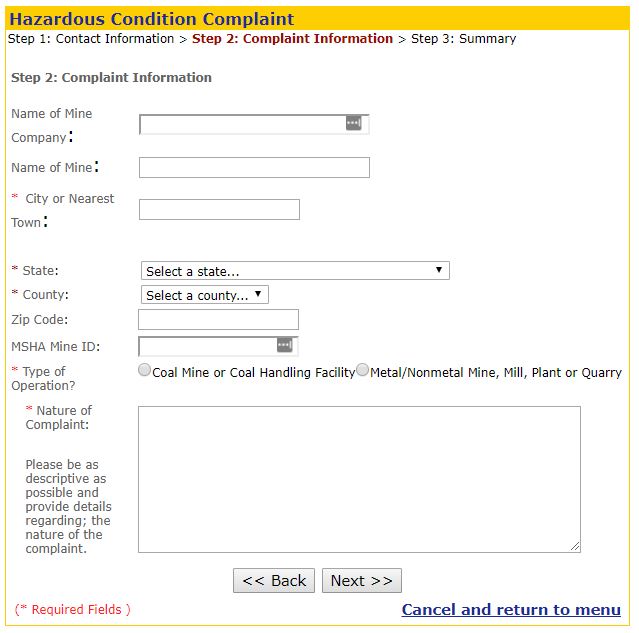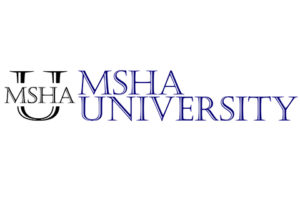For experienced miners as well as anyone new to the mining industry, you know that the Mine Safety and Health Administration (MSHA) is the regulatory division of the Department of Labor in the U.S. that governs everything mine-related. So, when you have a question, need to report something, or want specific compliance guidance, MSHA is the place to start.
So, what are the top 10 reasons to contact MSHA? The top 10 reasons to contact MSHA are to:
- Report an accident, emergency, or fatality.
- Anonymously report a hazardous condition.
- Get answers to general questions.
- Get training compliance guidance.
- Inquire about becoming an MSHA-approved trainer.
- Look up a mine using the MSHA search tool.
- Get technical support for online filing and password resets.
- Officially contest a citation or penalty assessment.
- Get statements or information for the media.
- Inquire about MSHA jobs, inspector positions, and internships.
It may not always be clear how to contact MSHA or where to go on their website depending upon what you need. While MSHA provides a lot of great information, let’s face it – Their site isn’t super easy to use. So, I’ve put together some helpful details on the 10 most common reasons people contact MSHA, including specific contact information and site links depending upon what you need.
1 – Report an accident, emergency, or fatality.
The most urgent and important reason to contact MSHA is to report and emergency.
Call 800-746-1553 to report an accident or hazardous condition 24 hours a day.
MSHA requires mine operators to immediately report all mining accidents within 15 minutes. Immediately reportable accidents include:
Death or Injury
- Death at a mine
- Event at a mine which causes death or bodily injury to an individual not at the mine at the time the event occurs
- Injury at a mine with potential to cause death
Fire or Explosion
- Unplanned ignition or explosion of gas, dust, blasting agent, or explosive
- Underground mines – Unplanned fire not extinguished within 10 minutes of discovery
- Surface mines and surface areas of underground mines – Unplanned fire not extinguished within 30 minutes of discovery
Inundation, Entrapment, Collapse, or Equipment Failure
- Unplanned inundation by a liquid or gas
- Unstable condition which requires emergency action, evacuation, or failure
- Unplanned roof or rib fall in active workings that impairs ventilation or impedes passage
- Entrapment for more than 30 minutes or which has a reasonable potential to cause death
- Damage to hoisting equipment in a shaft or slope which endangers an individual or which interferes with use of the equipment for more than 30 minutes
- Coal or rock outburst that causes evacuation or disrupts mining activity for more than 60 minutes
TIP! – Go to our Resources page for a link to MSHA’s Emergencies page for detailed descriptions of immediately reportable accidents.
2 – Anonymously report a hazardous condition.
It’s also extremely important to report any hazardous condition if you’re concerned that it isn’t being immediately addressed. This can be done by miners, miners’ representatives, or even members of the public. MSHA does not require you to identify yourself when reporting a hazardous condition.
To report the hazardous condition, you can call the same emergency number above, 800-746-1553, or you can file the report online.

TIP! – Go to our Resources page for a link to the online Hazardous Condition Complaint form.
3 – Get answers to general questions.
I’ve found it extremely easy to call MSHA and get quick answers to just about any regulatory question. If they don’t have an immediate answer, they’ll often either transfer you to an expert or offer contact info for someone who can help.
- Just call 202-693-9400 for non-emergency assistance with general questions.
4 – Get training compliance guidance.
You can always call for assistance with compliance questions. But it helps to ask informed questions when possible. So, it’s a good idea to start by reviewing the regulations and guidelines.
- Regulations – Title 30 – Code of Federal Regulations (CFR) – Parts 46 and 48 are commonly referenced for regulatory details on training miners and contractors.
- Guidelines – MSHA’s Program Policy Manual, Vol III offers some great, common language interpretations of the regulations from the CFR.
TIP! – Go to our Resources page for links to Title 30 CFR and MSHA’s Program Policy Manual, Vol III.
5 – Apply to become an MSHA-approved trainer.
To become an MSHA-approved instructor for Part 48 training, you should start by contacting your State Grant Participant. These are individuals and organizations who receive funding from MSHA to provide approved training programs.
Your local State Grant Participant contact will likely request resume information from you that illustrates your
- Relevant mining experience
- Teaching experience
TIP! – Go to our Resources page for a link to MSHA’s State Grant Participants directory.
6 – Look up a mine using the MSHA search tool.
MSHA has a great search tool called the Mine Data Retrieval System (MDRS) that allows you to look up a mine or contractor by name or MSHA ID.

TIP! – Go to our Resources page for a link to the MDRS online search tool.
7 – Get technical support for online filing and password resets.
MSHA provides Help Desk services for assistance with the online filing process, site navigation issues, or forgotten passwords.
You can call them at this number – 877-778-6055 or email them here – Desk.Help@DOL.gov.
TIP! – Go to our Resources page for a link to the MSHA Forms & Online Filings page.
8 – Officially contest a citation or penalty assessment.
Mine operators have 30 days to contest all or part of a citation, or “civil penalty.” The process includes filing a request for a hearing with the Federal Mine Safety and Health Review Commission administrative law judge and clearly stating the reasons for contesting the citation.
A “notice of contest” must include:
- Statement of Position – a short and plain statement of the operator’s position regarding each issue of law and fact and the relief requested and
- Copy of the Original Citation – a copy of the contested citation or order
TIP! – Go to our Resources page for a link to the Federal Mine Safety and Health Review Commission e-filing feature.
9 – Get statements or information for the media.
If you’re a member of the media inquiring about a recent event or mine accident, you can reach MSHA for their official response here:
- 202-693-4653 / Laura McGinnis / McGinnis.Laura.K@DOL.gov
- 202-693-9423 / Amy Louviere / Louviere.Amy@DOL.gov
10 – Inquire about MSHA jobs, inspector positions, and internships.
MSHA provides career information including:
- MSHA jobs – with intuitive search features and online application filing
- Inspector jobs – with contact details and instructions on how to prepare your resume
- Internships and jobs for recent college graduates – with helpful info on eligibility and other student programs
- Other U.S. Department of Labor jobs

TIP! – Go to our Resources page for a link to MSHA’s Careers page.
Related Questions
How Do I Contact MSHA?
MSHA provides several options for contact depending upon the nature of your interest.
Emergencies
- Call 800-746-1553 to report an accident or anonymously file a hazardous condition complaint.
- File a hazardous condition complaint online. See our Resources page for links.
General Questions
- 202-693-9400 / AskMSHA@DOL.gov
Media Inquiries
- 202-693-4653 / Laura McGinnis / McGinnis.Laura.K@DOL.gov
- 202-693-9423 / Amy Louviere / Louviere.Amy@DOL.gov
Online Filing Support
- 877-778-6055 / Desk.Help@dol.gov

